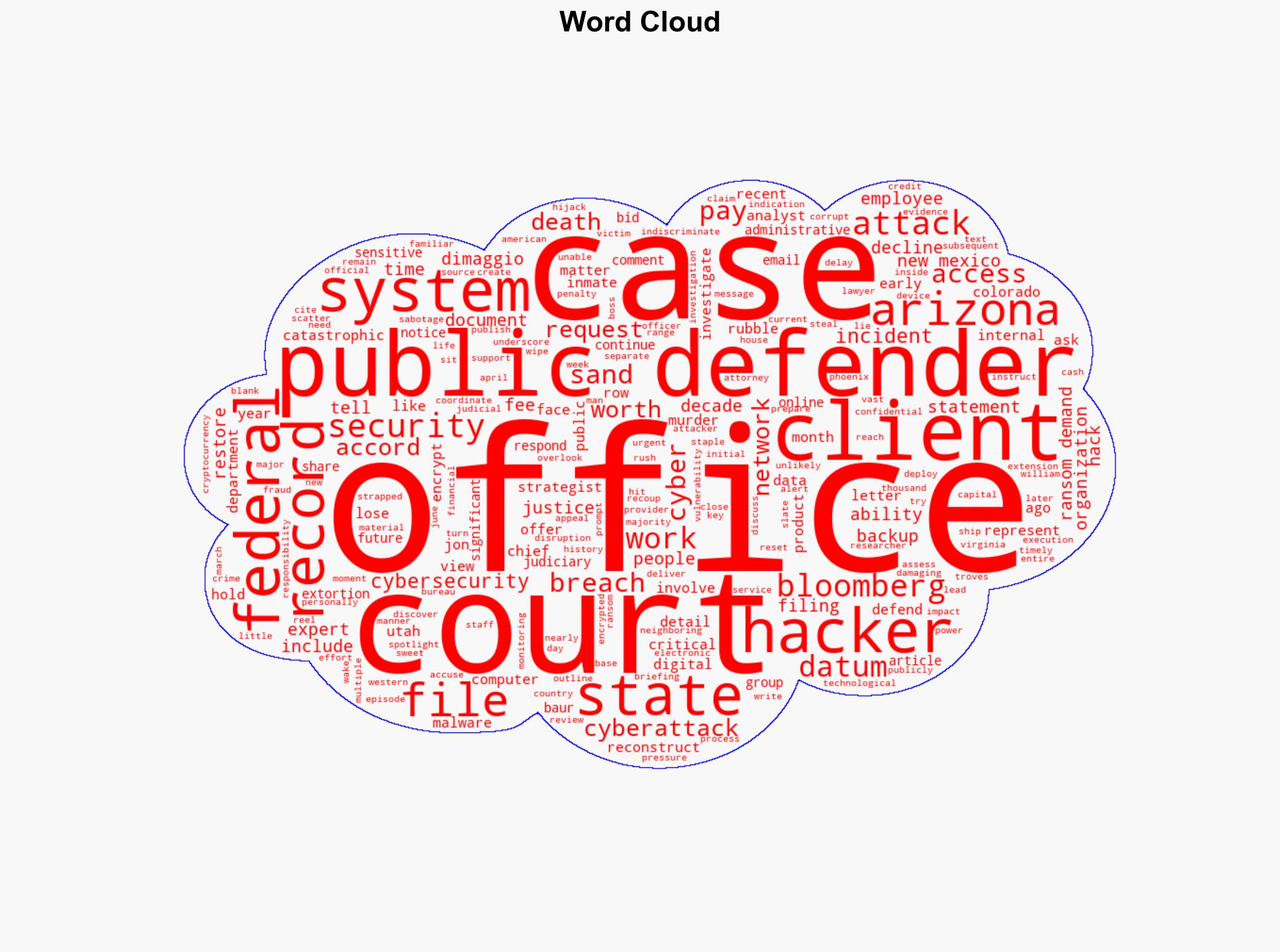Catastrophic Hack Underscores Public Defender Security Gaps – Insurance Journal
Published on: 2025-10-29
Intelligence Report: Catastrophic Hack Underscores Public Defender Security Gaps – Insurance Journal
1. BLUF (Bottom Line Up Front)
The recent cyberattack on public defender offices in multiple western states highlights significant vulnerabilities in the judicial system’s cybersecurity infrastructure. The most supported hypothesis suggests that the attack was opportunistic, targeting organizations with valuable data but limited resources for cybersecurity. A strategic recommendation is to enhance cybersecurity measures across similar institutions, with a focus on data protection and incident response capabilities. Confidence level: Moderate.
2. Competing Hypotheses
1. **Opportunistic Attack Hypothesis**: The attack was carried out by cybercriminals seeking financial gain by targeting organizations with valuable data and limited cybersecurity defenses, such as public defender offices.
2. **Coordinated Disruption Hypothesis**: The attack was part of a coordinated effort to disrupt the judicial process, potentially by actors with a vested interest in delaying or sabotaging legal proceedings.
Using the Analysis of Competing Hypotheses (ACH) 2.0, the Opportunistic Attack Hypothesis is better supported due to the lack of evidence indicating a broader coordinated effort and the commonality of ransomware attacks targeting financially constrained organizations.
3. Key Assumptions and Red Flags
– **Assumptions**:
– Public defender offices are perceived as low-security targets.
– Cybercriminals prioritize financial gain over political or ideological motives.
– **Red Flags**:
– Absence of evidence for data being published online, which is atypical for ransomware attacks.
– Lack of clarity on whether any ransom was paid or demanded.
– **Blind Spots**:
– Potential underestimation of the attackers’ motives if politically motivated.
– Insufficient information on the attackers’ identity and methods.
4. Implications and Strategic Risks
The attack underscores the vulnerability of critical legal infrastructure, potentially leading to cascading effects such as delayed legal proceedings and compromised client confidentiality. This could erode public trust in the judicial system and create opportunities for further exploitation by cybercriminals. The risk of similar attacks on other underfunded public institutions remains high.
5. Recommendations and Outlook
- **Immediate Action**: Implement robust cybersecurity measures, including regular audits, employee training, and incident response planning.
- **Long-term Strategy**: Advocate for increased funding and resources for cybersecurity in public institutions.
- **Scenario Projections**:
– **Best Case**: Enhanced security measures prevent future attacks, restoring trust in the system.
– **Worst Case**: Continued attacks lead to systemic disruptions and loss of sensitive data.
– **Most Likely**: Incremental improvements in security with occasional breaches due to resource constraints.
6. Key Individuals and Entities
– Jon DiMaggio
– Jon Sand
– William Sweet
7. Thematic Tags
national security threats, cybersecurity, counter-terrorism, regional focus





